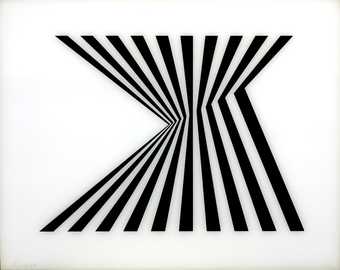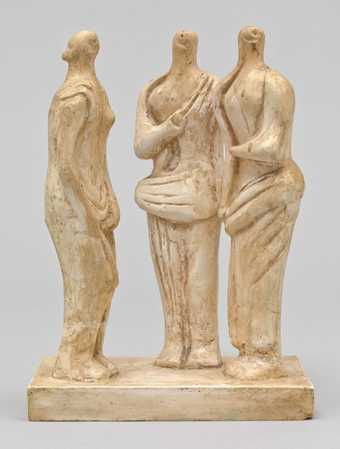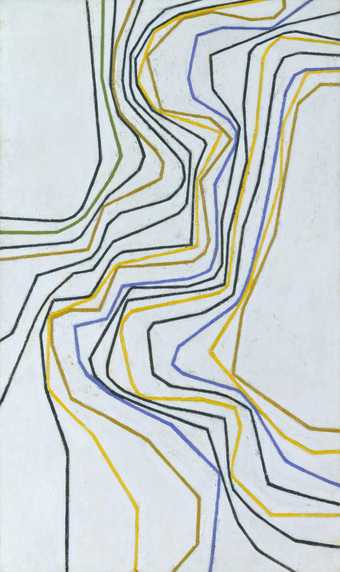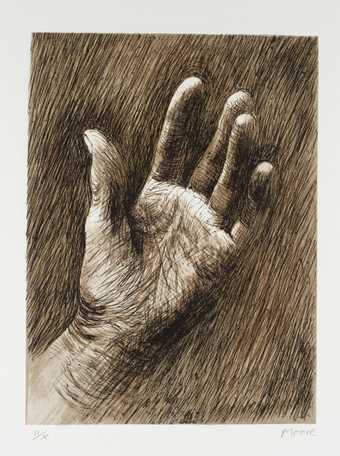
Henry Moore OM, CH
The Artist’s Hand V
(1979)
Tate
Form = three-dimensional shape
What does form even mean? It basically means three dimensional shape. But like lots of words, shape and form can mean different things in different contexts. Form can mean two things in art. It can simply mean the form a whole artwork takes – a description of what it's made of, like 'an oil painting'.
But usually when we say ‘creating forms’ in art, we mean something an artist does within their work. It is manipulating your materials to create three-dimensional shapes, to create a sense of depth, or volume, or to make a shape you feel you could hold.
For sculpture this is more obvious, it means chipping away at stone, or modelling in clay or wax to build up a recognisable 3D form. But for drawing, painting and printing, the illusion of 3D form is created simply by the marks and colours the artist puts down on the paper or canvas.
Using bright highlights and dark shadows can help artists create a sense of form - it creates an optical illusion, as our eyes and brain process light grading into dark as a shape with volume. This works with grading from light to dark colour as well as in monochrome.
Up till the 20th Century most European artists practised creating this illusion by modelling the shape of the human body, and draping cloth around it. Artists worked from life models but often also from sculptures, like those found in the V&A’s sculpture court. Many art schools had rooms full of casts of famous sculptures for students to practice their drawing skills.
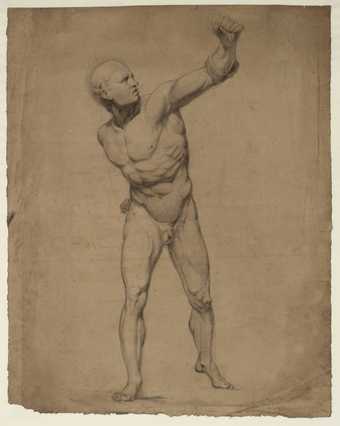
Joseph Mallord William Turner
Study of the Fighting Gladiator
(?1793)
Tate

Joseph Mallord William Turner
Study of the Vatican Meleager
(?1792)
Tate
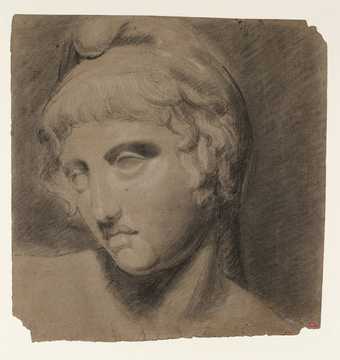
Joseph Mallord William Turner
Study of the Head of Paris
(?1792–3)
Tate
Pencil and charcoal and chalk were, and still are, favourite materials for blending between dark and light. Artists can use a dark material like pencil or charcoal on a light paper, and a light material like a white chalk on a darker coloured paper (or a combination of both, of course). Sir Edward Coley Burne-Jones, Bt is maybe best known for his work in decorative arts - he worked with William Morris on designs for stained glass windows and tapestries. But his sketches and designs for figures were often done in pencil and chalk. He also worked into his sketches, using gouache paint and watercolour to add highlights and detail.
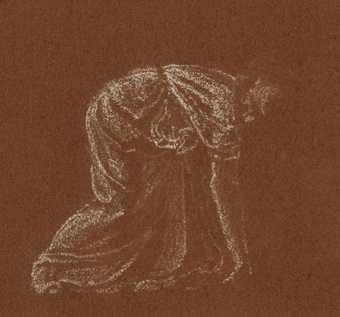
Sir Edward Coley Burne-Jones, Bt
Stooping Woman
Tate
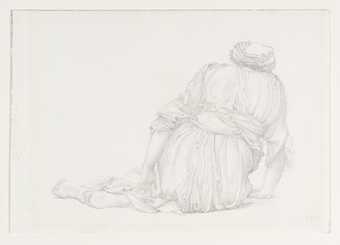
Sir Edward Coley Burne-Jones, Bt
Study of Seated Figure for ‘The Garden Court’ in the ‘Briar Rose’ Series
(c.1873)
Tate
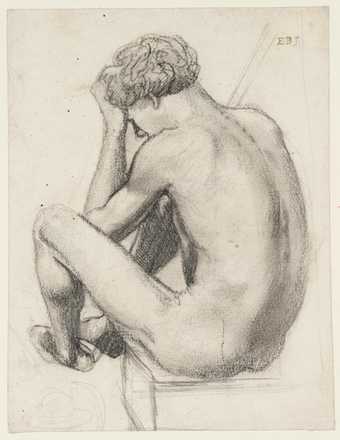
Sir Edward Coley Burne-Jones, Bt
Study of a Seated Male Nude for ‘The Liberation of St Peter’ in the Church of St Michael and All Angels, Lyndhurst, Hampshire
(c.1863)
Tate
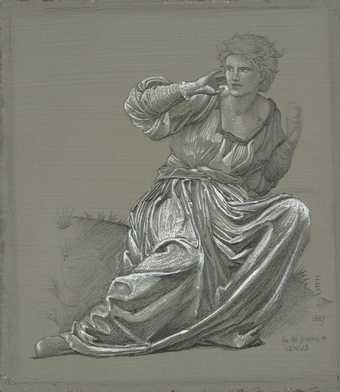
Sir Edward Coley Burne-Jones, Bt
Study of a Seated Woman for ‘The Passing of Venus’
(c.1877)
Tate
Paintings
In painting, artists can use the same technique of blending to give the sense of rounded forms.
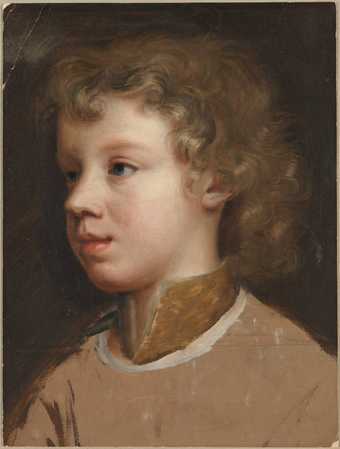
Mary Beale
Sketch of the Artist’s Son, Bartholomew Beale, Facing Left
(c.1660)
Tate
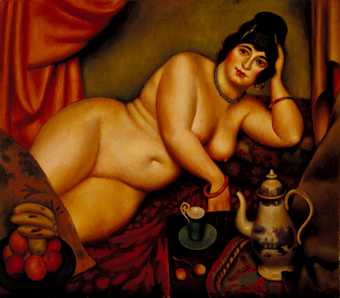
Mark Gertler
Queen of Sheba
(1922)
Tate
But they can also use the strokes or marks of their brush to bring form to their works. Sometimes, building up flat planes of paint can bring shape to a body rather than blending between areas of colour.
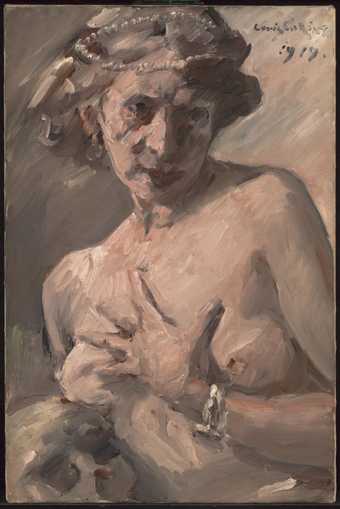
Lovis Corinth
Magdalen with Pearls in her Hair
(1919)
Tate
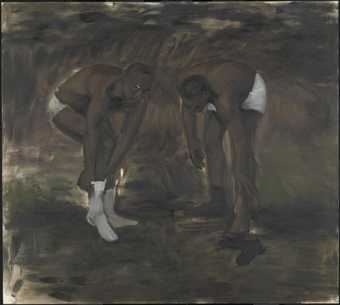
Lynette Yiadom-Boakye
The Generosity
(2010)
Tate
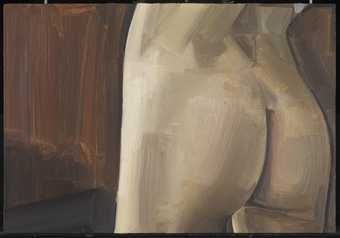
Gillian Carnegie
rsXXII-/8-7
(2007)
Tate
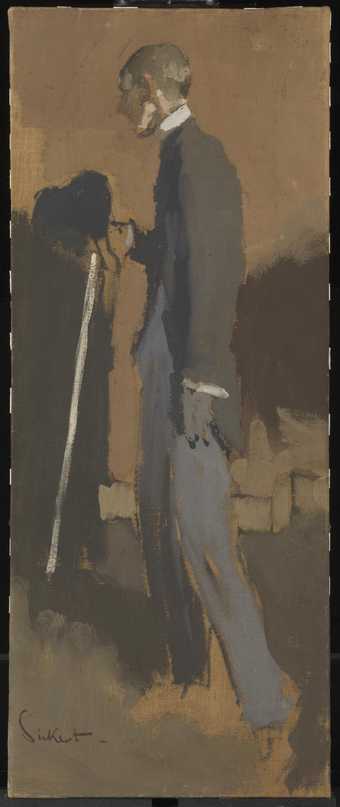
Walter Richard Sickert
Aubrey Beardsley
(1894)
Tate
Folding and Draping
Draped cloth is also a useful thing to practice your modelling skills on. Drawing cloth can be a good place to start for an artist, as it is easier for the human eye to pick out the shapes of the lighter and darker areas as they are more abstract - and they are often more well-defined than the soft blend on skin.
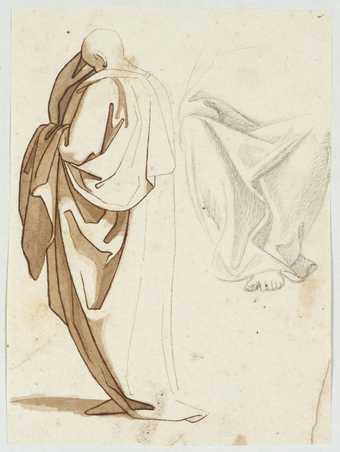
John Scarlett Davis
[title not known]
Tate
It can also give the opportunity to work with really vibrant colours and create flowing forms or creases and folds through the play of the intensity of shades.
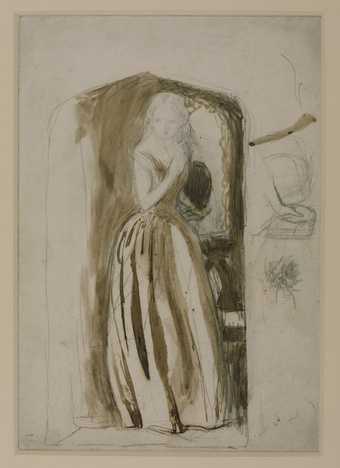
Arthur Hughes
Studies for ‘April Love’
(c.1856)
Tate
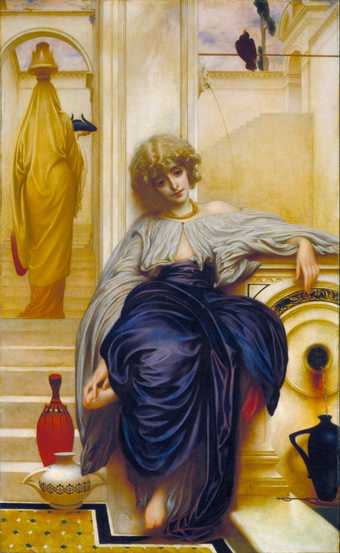
Frederic, Lord Leighton
Lieder ohne Worte
(exhibited 1861)
Tate
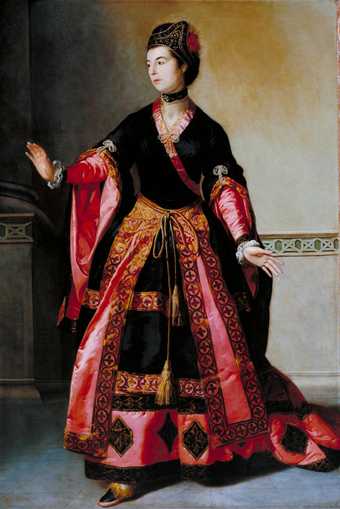
Tilly Kettle
Mrs Yates as Mandane in ‘The Orphan of China’
(exhibited 1765)
Tate
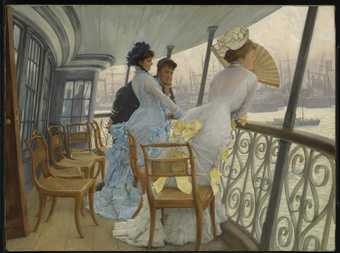
James Tissot
The Gallery of HMS Calcutta (Portsmouth)
(c.1876)
Tate
While sometimes it seems the shadows are the easiest to pick out, in the 17th century, shining a bright light on the expensive fabrics worn by their sitters gave portrait painters dazzling highlights to bring their paintings to life.
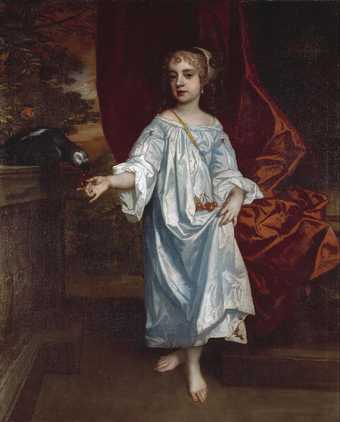
Sir Peter Lely
Girl with a Parrot
(c.1670)
Tate
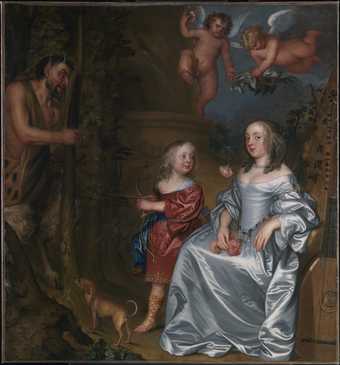
John Hayls
Portrait of a Lady and a Boy, with Pan
(1655–9)
Tate
Picking a patterned cloth also gives the opportunity to show the folds and fall of cloth, through the distortion and breaking up of the repeated pattern.

William Morris
La Belle Iseult
(1858)
Tate
Have a Go
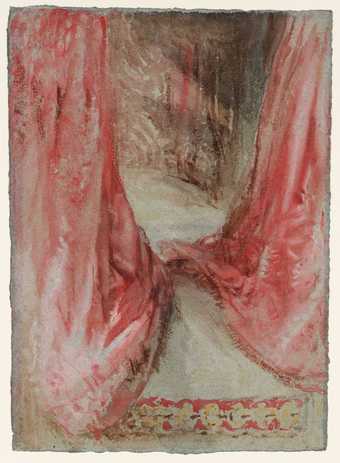
Joseph Mallord William Turner
Petworth House: Study of Pink Bed Curtains
(1827)
Tate
Use cloth to create a form.
You can easily set up a draped cloth to practice modelling forms on. Set up a draped blanket over a chair or hook up a curtain. You could find material you can crumple or fold or even tie into a knot. Make sure you’re using something that drapes well - too stiff and heavy will make it hard to get soft shapes to model. If you can, change the lighting to cast some deep shadows into the folds of your cloth: you could turn off any overhead lights and use a single angled lamp, or set up your drapery side on to a bright window.
Try using a soft pencil on white paper and marking out the darkest shapes or deepest shadows. Then work up to the highlight, or lightest areas, where you might not mark the paper at all. Try to blend the gradations softly between the darkest areas and the lightest. You could then try working on dark paper and starting with the lightest areas and blending into the darker areas.
Still Life
These techniques of creating form can be applied to objects as well. In the 1600s, European artists perfected the trompe l'oeil paintings – creating paintings of objects that looked so real, you’d think you could pick them out of the picture. This was a popular sort of painting -a clever trick you could tease your dinner guests with.
But creating a still life doesn't always have to be photographically perfect. Our eyes and brain will still find the form of fruit and flowers, vases and jugs from all sorts of mark making.
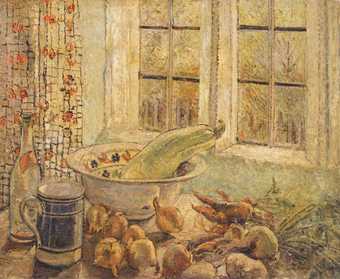
Louise Pickard
Still Life by a Window
(c.1916)
Tate
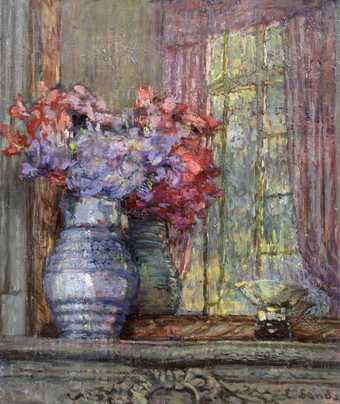
Ethel Sands
Flowers in a Jug
(?1920s)
Tate
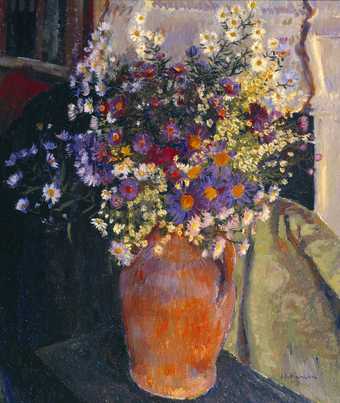
James Bolivar Manson
Michaelmas Daisies
(c.1923)
Tate
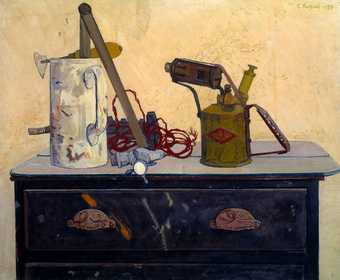
Claude Rogers
The Blow Lamp
(1953–4)
Tate
In fact you can make the form of a jug by carefully putting together simple lines and colours, like Patrick Caulfield does:
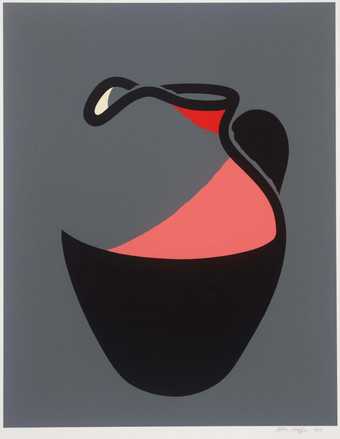
Patrick Caulfield
Pink Jug
(1981–2)
Tate
© The estate of Patrick Caulfield. All Rights Reserved, DACS 2024
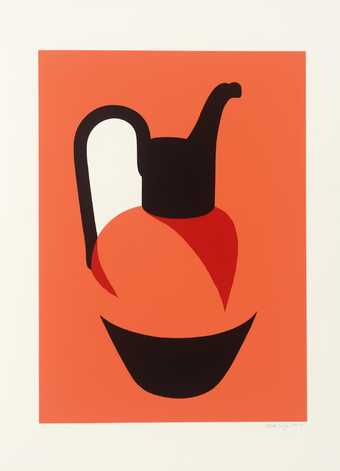
Patrick Caulfield
Pitcher
(1981–2)
Tate
© The estate of Patrick Caulfield. All Rights Reserved, DACS 2024
Other Types of Form
It’s not only real-life forms that artists draw inspiration from. Creating sharp geometric shapes can bring dreamlike or uncanny forms to life.
Geometric Forms
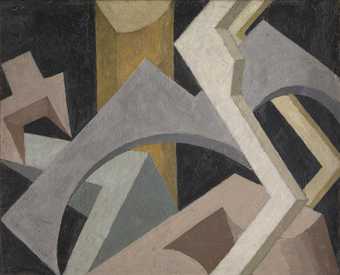
Jessica Dismorr
Abstract Composition
(c.1915)
Tate
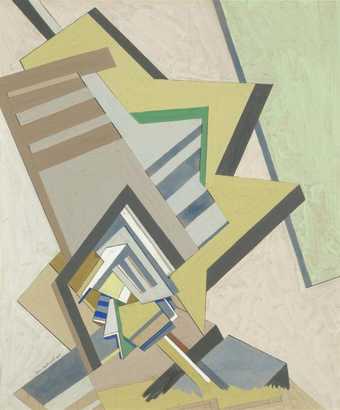
Edward Wadsworth
Abstract Composition
(1915)
Tate
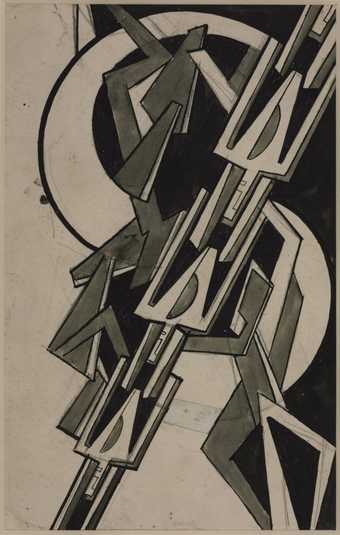
Helen Saunders
Monochrome Abstract Composition
(c.1915)
Tate
Form in abstract
And sometimes, creating form can even come from the completely abstract play of flat shapes and tone.
Bridget Riley exploits our brains’ natural search for forms we can recognise. Her op art paintings seem to fold or undulate, despite being made of simple regular patterns and flat shapes.
Have a go
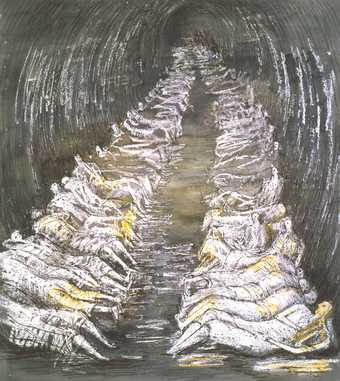
Henry Moore OM, CH
Tube Shelter Perspective
(1941)
Tate
Henry Moore is most well-known as a sculptor. He created monumental artworks, many of which combine the recognisable shapes of human figures with the natural forms of the landscape- like rolling hills or weathered pebbles. His sketches of people sheltering in the London Underground from bombing in the Second World War have this sense of figures but also landscape.
Drawing from life (using real things not photographs), find some stones or branches, or landscape features and sketch these natural forms. Use techniques of blending and highlighting, or experiment with flat planes of colour. Paint or draw the same objects or setting more than once, and as you work into the subject, see if you can incorporate or combine human forms to create something new. A human natural hybrid maybe.



